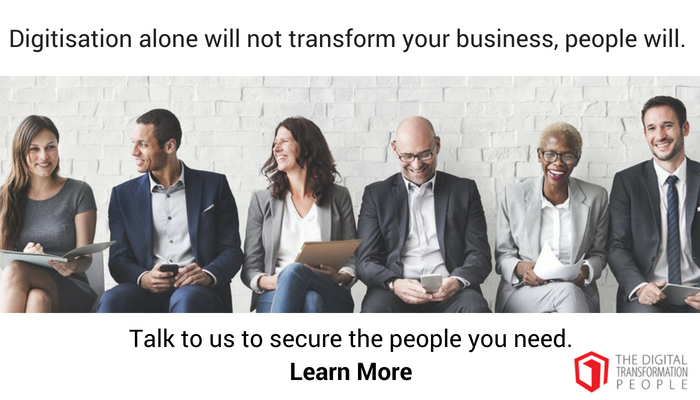A lot of conversations about digital transformation today are about B2C businesses. But it’s a mistake to assume things aren’t changing in the B2B world too.
It’s thanks to the constant churn of new technologies and methodologies that make what we do — whatever we do — easier, smarter and more efficient.
Whether you call it “going digital” or something else, what we’re talking about is an investment. And investments come with opportunities as well as potential risks. Here’s a brief look at both.
Digital Transformation Means More Overlap Between B2B and B2C Than Ever
With the right application of digital technologies, B2C companies can break into B2B market more easily than you might realize. But even if this isn’t your goal, there are some cues worth taking from B2C — including using data to make marketing more personalized.
The most visible example of this is the crowd favourite “Customers Also Bought” section on e-commerce websites. But this is just the beginning of the ways you can activate, and then act upon, customer data and insights.
In fact, a considerable amount of the data-driven personalization being done by B2C companies today readily applies to the B2B market as well. You can find a host of analytics services and software that can yield insights into your prospects such as:
- Which channels prospects use to find you
- When, and from where, a visitor accessed your website
- What type of device was used
- Whether items or services were added to a cart and later abandoned
With this kind of information at your fingertips or your CRM’s fingertips, you can better tailor your marketing efforts — including knowing how best to reach your audience. Your system may even offer automatic scoring to help determine which leads are worth following up on.
At the end of the day, business owners are internet shoppers just like the rest of us. And the techniques that work elsewhere, for meeting customers on the channels they use, and making a personal sales pitch rather than a general one, definitely work here too.
Digital Transformation Helps Companies Recover Unclaimed Value
There is reason to believe that some industries could pick up as much as $200 billion in unclaimed value that’s been left on the table thanks to inefficient operations, poor customer relationship management, and a general sluggishness to adopt the technologies already impacting the B2C market.
In other words, B2B is overdue for a major shift towards a “digital-first” culture. We’ve seen how it can make companies more agile and more responsive to real-time customer expectations. But how else can your company embark on a digital transformation?
It probably feels like there’s a lot to take into account, given the explosion in service-driven companies promising that their machine learning, automation, AI and predictive modelling can help you save money, manage your customer relationships, optimize your supply chain and recover lost productivity.
It’s true that all of this requires technology talent and a strong digital strategy. But let’s get more specific about some of the tools, opportunities, and insights that “doing digital” might provide for your B2B company:
- Tools for detecting and preventing customer attrition through online signals
- Automated re-ordering during times of heavy demand
- Automatic generation of invoices and other “triggers” for automatic back-office functions
- Easier determination of sales quotas thanks to improved forecasting
- Deploying sensors throughout supply chains provides condition monitoring at every step and helps reduce damage in transit (as well as strained client relationships)
Your company’s digital strategy might use some, all, or none of these.
It’s easy to see why some of these tools, like a data-driven approach to retention, might have more universal appeal than others. In this case, companies can glean insight into which clients might be considering a change and how best to work towards retaining them.
Data points of interest might include unopened emails, lapses in client logins or check-ins, and even client and prospect activity on social media.
In this way, going digital gives you eyes and ears for “reading the room” and then learning how to up your game. If you work in a competitive industry, data needs to inform everything you do.
The other examples above represent ways for digital technologies to alleviate the burden of repetitive or monotonous tasks. This frees up your teams to concentrate on more creative problem-solving and decision-making.
It’s undeniable that “thinking digitally” is what helped move Uber from each goalpost to the next. They simultaneously leveraged existing technologies, and came up with some of their own, to transition from a “black car” hiring company to a ride-sharing company and eventually, one assumes, to a successful presence in the trucking industry.
If there’s a warning worth delivering here, it’s to remember that Uber didn’t invest in digital technologies first and search for a solution second. They sought or developed the tools they needed, at every step, in such a way that each leap forward served an existing, larger vision.
And though the tools changed along the way, the vision essentially did not: to “bring transportation to everyone.”
Digital Transformations Require Talent
It’s worth noting that competition is expected to heat up when it comes to hiring professionals with data and computer science backgrounds. As Jennifer Priestley of Kennesaw State University put it, “We’re seeing the employment equivalent of a run on the bank … everyone’s chasing the same talent at the same time.”
Digital strategies for B2B companies are built on smart analytics, artificial intelligence, cloud computing, lightning-fast communication protocols, robust and scalable IT infrastructure, and much more. That means you need people to build it for you, or you need a service provider who can lease you access to it.
In other words, there’s a considerable amount of “job creating” potential here — and of note is the number of companies relaxing their experience and degree requirements when it comes to courting digital talent. The B2B and B2C communities need world-class, digital-focused know-how now more than ever.
And they know good ideas can come from anywhere, regardless of educational background or level of professional experience.
Even if the heart of your business and your mission statement don’t change much over time, we’ve seen time and again that companies always need to be looking ahead for new ideas and new ways to accomplish familiar tasks.
Digital transformation isn’t about the technology, really — it’s about knowing opportunity when you see it.
Article by channel:
Everything you need to know about Digital Transformation
The best articles, news and events direct to your inbox
Read more articles tagged: Customer Experience, Digital Marketing, Featured









